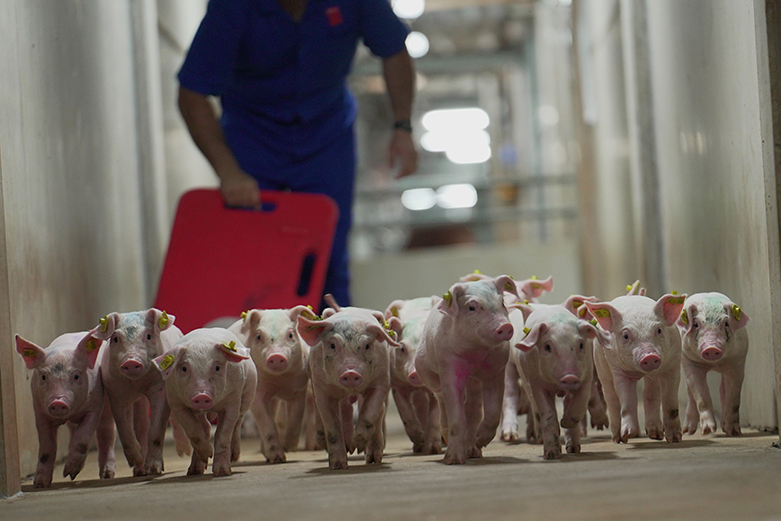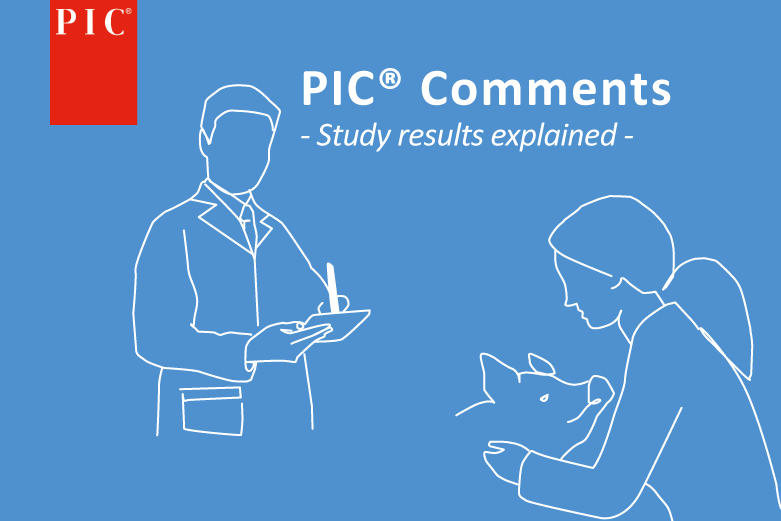Minimising the wean-to-oestrus interval (WEI) is key to long-term reproductive success. Two studies were used to study the relationship of the wean-to-oestrus interval (which varies from 3 to 6 days) and the duration of oestrus:
- Study 1 describes the effect of insemination timing in relation to ovulation, fertilisation rate and accessory sperm count.
- Study 2 asks whether a second insemination affects fertilisation rate and sperm count.
- The working protocol and analysis were as follows:
- Oestrus detection. Every 8 h, approx. 61 h after weaning. The start time of oestrus was taken as 4 h before the first immobilisation response and the end time of oestrus as 4 h after the last immobilisation response.
- Insemination. Performed at variable time from the onset of oestrus (24 ± 14 h, range 4 to 61 h), sows were brought to the boar pen and inseminated once with a commercial dose of 3×109 spermatozoa.
- Ovulation detection. By transrectal ultrasound approx. 70 h after weaning to detect large follicles (> 4 mm) or corpora lutea. 16 h after the onset of oestrus, transrectal ultrasonography was performed at 4 h intervals to assess the time of ovulation.
- Embryonic development. Sows were sacrificed 120 ± 6 h after ovulation and the number of corpora lutea in both ovaries was recorded.
- Data analysis. To detect whether oestrus duration and interval from onset of oestrus to ovulation were related to WEI, one-way linear regressions were performed.
Analysis of the results of both experiments determined that an increase in WEI leads to a decrease in the duration of oestrus and in the interval from the onset of oestrus to ovulation. Sows inseminated between 0 and 24 h before ovulation showed consistently higher fertilisation results irrespective of WEI. Sows that were inseminated outside this range showed a higher proportion of unfertilised oocytes (P < 0.001).
These results suggest that the negative effects of longer WEI on litter size and subsequent farrowing rates described in the literature may be the result of suboptimal insemination timing relative to ovulation rather than lower sow fertility.
Source: Relationship of Weaning-to-Estrus Interval to Timing of Ovulation and Fertilization in Sows, B. Kemp and N. M. Soede, Department of Animal Husbandry, Institute of Animal Sciences, Wageningen Agricultural University, The Netherlands
PIC’s comments
María Ros and Sebastián Casiró, PIC Technical Services PIC Southern europe
The wean-to-oestrus interval (WEI) is one of the most important parameters for optimal profitability. It is the moment that determines the start of a sow’s new cycle and her reproductive success in the next cycle, thus impacting the overall performance of the farm. It is therefore important to establish insemination protocols that are appropriate for each farm, as there are factors that can cause this parameter to vary between farms (length of lactation, sow feeding during this phase, loss of body condition, number of weaned piglets, etc.).
This study reflects the importance of the timing of insemination depending on the time of ovulation.
Sows inseminated at a suboptimal time are usually wrongly considered infertile. These are sows that do not have any reproductive problem, but the insemination time is not optimal for correct fertilisation. The same happens with the prolificacy of the next farrowing, as we penalise sows for their performance in a specific farrowing, without taking into account that an WEI > 6 days will mean a decrease in prolificacy, due to the short duration of oestrus and the narrow window between the onset of oestrus and ovulation. Therefore, what has been observed is not the cause, but the consequence of not having a well-defined protocol adapted to this group of animals.
Management, as in most of the day-to-day processes on the farm, is fundamental to achieve an WEI< 6 days. If we achieve this objective, the insemination programmes will have more room for manoeuvre and the possibility of success, we will be able to obtain correct fertilisation of the sows’ oocytes and thus achieve the expected prolificacy for each cycle. A defined insemination protocol for each group of sows, together with a correct management of their feeding and body condition is key to achieve reproductive success.
This article was originally published in the Spanish journal SUIS (March 2022).




